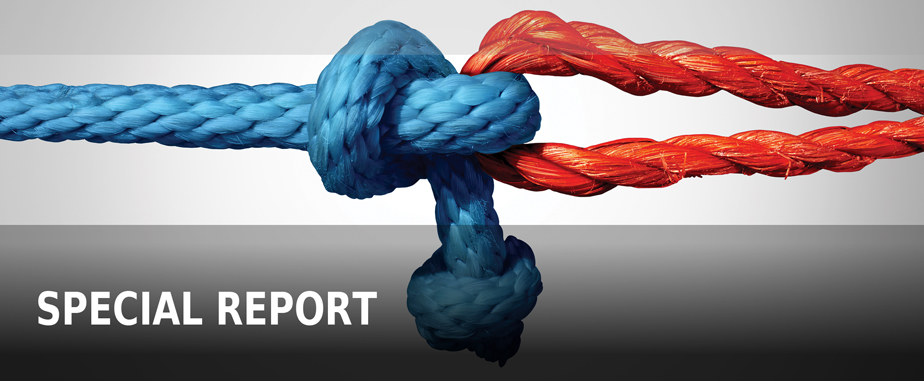Argentina M&A: light at the end of the tunnel
June 2016 | SPECIAL REPORT: MERGERS & ACQUISITIONS
Financier Worldwide Magazine
Last year, the Argentine M&A landscape was at a standstill, waiting for the outcome of the most important election in 12 years. At that time, no investment boom would take place unless the country resolved the 2002 default and tackled the high inflation of previous years.
One year later, the country is in a completely different scenario.
In a rather surprising outcome, Mauricio Macri won the election. Within the first week after taking office in early December 2015, the new administration effectively and substantially changed the legal and de facto foreign exchange control regime (which worked as an effective barrier to international trade, cross-border financing, payment of dividends and the inflow and outflow of capital in general). This came with a 30 percent devaluation of the local currency against the US dollar and a government-supervised semi-free float of the currency.
In March 2016, the finance minister announced an agreement with the holdouts, which was eventually overwhelmingly backed by the opposition-led Congress. At the time of writing, it received subscription offers of more than $65bn for the $15bn debt issue to settle the holdouts matter for good. This evidences a major step in Argentina’s return to the international capital markets after a 13-year long absence. It remains to be seen whether as a nation Argentina has learned the lessons of the past, so debt will be incurred to boost the local economy rather than to disguise a lack of fiscal discipline.
Another major turn is in the foreign policy field. Argentina is finally normalising its international relationships, and in these first five months in office, Buenos Aires has received the visits of the presidents and prime ministers of, among others, the US, Italy and France. Mr Macri himself attended the Davos summit in January. In news hardly believable for a country like Argentina, Mr Macri has just been named by Time magazine as one of the top 100 most influential people of 2016.
On the less positive side, after years of frozen utility tariffs, the government authorised large increases in the prices of gas, electricity and water. These increases were implemented to create investment incentives in the relevant sectors as well as to eliminate certain subsidies with the purpose of reducing the ever growing fiscal red. While many believe these measures were inevitable, the immediate effect has been the increase of the already high inflation (all estimates suggest that YTD inflation exceeds 35 percent) and, more painful than anything, poverty and, albeit not significant yet, the unemployment rate. The government seems to be well aware of this and is taking its first steps to deal with this matter seriously in the short term.
According to IMF estimates, in 2016 the Argentine economy will be in recession, with GDP at 1 percent negative, resulting from the measures described above and compounded by the Brazilian recession. But the 2017 outlook is much better; 3.3 percent growth, combined with a steep decrease in inflation, is expected.
To put it in a metaphorical way, one year ago we were in the middle of a tunnel with no clear end in sight. Now, we start to see the light at the end of the tunnel.
Against this backdrop, investors have already begun to show an interest in Argentine assets. This is still largely at a standstill, but we are already experiencing a revived interest by private equity funds, long absent strategic investors and newcomers from different industries and backgrounds.
It is expected that the initial driver of major investments will be in the infrastructure sector. Argentina is in urgent need of improving its energy supply (in all of its forms) and several bids are underway to expand energy generation.
Further, better transportation networks (roads, highways, railways, etc.) need to be either built from scratch or significantly repaired. The same applies to the healthcare, education, communications and public security sectors. In this regard, the government has just announced a draft bill intended to reformulate and boost public and private partnerships. Unlike previous attempts, this time the signal given by the government is that it intends to truly support and partner with the private sector. We are confident that many opportunities will be available in these areas.
The real estate sector, which has been a major player in previous rebounds of the Argentine economy, will most likely recover. Prices are still cheap relative to the region and international standards, so we expect international developers to return to the market. Major international retailers absent in the country but present in the region will most likely jump in, which creates opportunities in sectors as diverse as apparel, electronics and food.
Industry-specific opportunities will also be available for strategic investors in pharma, biotech, software development, engineering and the service sector in general. The management talent available in Argentina is huge, due to high educational skills combined with extensive experience in dealing with the challenging scenarios that the business environment has faced in the recent past.
Diego Krischcautzky is a partner at Marval, O’Farrell & Mairal. He can be contacted on +54 11 4310 0100 ext. 1517 or by email: dk@marval.com.
© Financier Worldwide
BY
Diego Krischcautzky
Marval, O’Farrell & Mairal
FORUM: M&A in the healthcare & pharma sector
Due diligence is the mother of good luck
Security risks in mergers and acquisitions
Life after closing: who’s afraid of post-deal integration?
M&A activity in the Czech Republic and CEE/SEE
Transformational times in Brazilian infrastructure M&A
Argentina M&A: light at the end of the tunnel
Schemes of Arrangement: the new black in the New Zealand takeovers world


